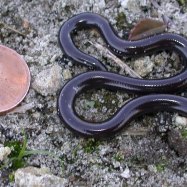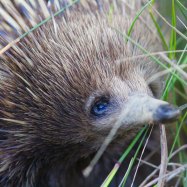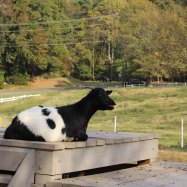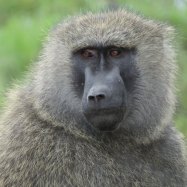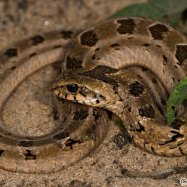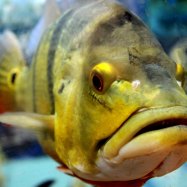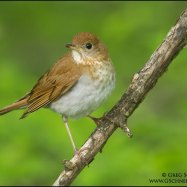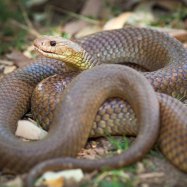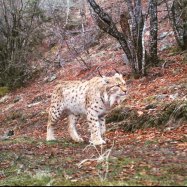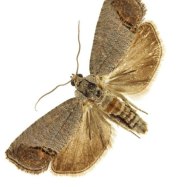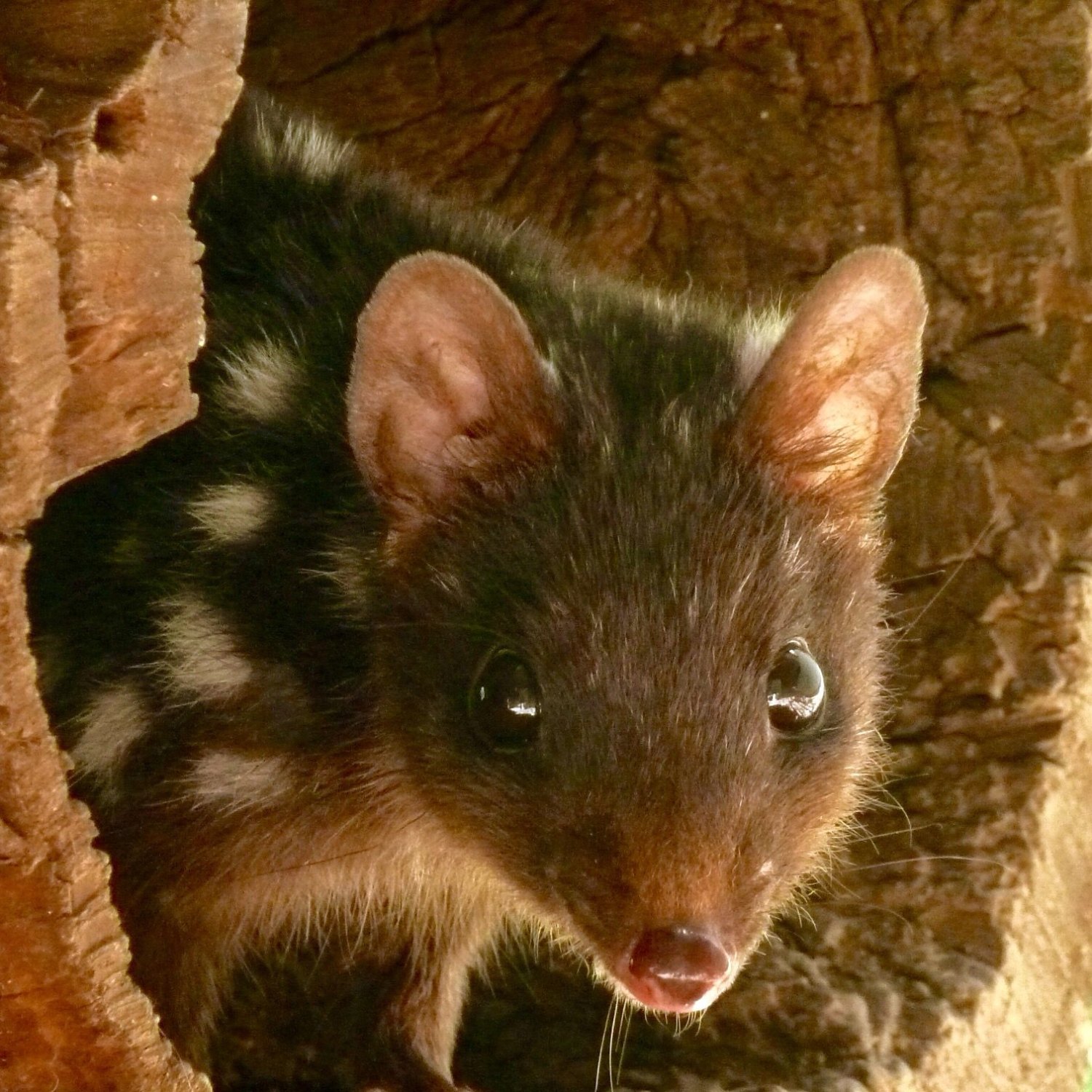
Quoll
30-75 cm
The quoll, found in Eastern Australia, Tasmania, and New Guinea, is a small and slender animal with a long tail. Belonging to the Dasyuridae family, they measure 30-75 cm in length and are known for their adorable appearance. These curious creatures make for great sightings on nature walks and are an important part of the ecosystem. #Quoll #AustralianWildlife #NatureWalk
Animal Details Summary:
Common Name: Quoll
Kingdom: Animalia
Habitat: Forests, grasslands, woodlands
The Unique Quoll: Australia's Small but Fierce Mammal
Australia is known for its diverse wildlife, with many unique species found only on the continent. Among these fascinating creatures is the quoll, a small but fierce mammal with a distinctive appearance and behavior. With its scientific name Dasyurus sp. and commonly referred to as quoll, this animal is part of the Animalia kingdom, Chordata phylum, Mammalia class, Dasyuromorphia order, and Dasyuridae family Quoll. Its habitat includes forests, grasslands, and woodlands, and it is found mainly in Australia and New Guinea. In this article, we will take a closer look at the wonderful world of quolls, their characteristics, behavior, and role in their natural environment.Appearance and Size
Quolls are small animals, ranging in size from 30 to 75 cm. Their weight can vary from 300 to 1500 g, depending on the species and location. They have a small, slender body with a long, bushy tail, making up most of their body length. Their short legs and sharp claws allow them to navigate their forested habitats with ease, climbing trees and digging for food. Quolls have a distinctive color pattern, which varies with the species. They are typically brown or black with white spots covering their body, giving them a speckled appearance. This color pattern is not only striking but also serves as a form of camouflage, helping them blend in with their surroundings and avoid detection by predators Quagga.Geographical Distribution and Habitat
Quolls are mainly found in Australia and New Guinea, making them endemic to the region. Within Australia, they are primarily located in eastern Australia, Tasmania, and New Guinea. Their distribution is dependent on the species, with some found in a more limited range, while others are more widespread. For example, the tiger quoll, the largest and most well-known species, is found in Eastern Australia, while the New Guinean quoll is only found on the island of New Guinea.As for their habitat, quolls are adaptable animals, able to thrive in different environments. They can be found in forests, grasslands, and woodlands, where they can find food, shelter, and suitable conditions for raising their young. Although they are mostly terrestrial, they are also competent climbers and can be found resting in trees or hunting for prey.
Diet and Feeding Habits
Quolls are carnivorous animals, meaning that they primarily feed on meat. Their diet consists of a variety of prey, including insects, reptiles, birds, and small mammals such as rodents. They are opportunistic hunters, meaning they will take advantage of any prey available to them. This can range from small insects to larger animals, depending on their size and hunting ability. Quolls are also known to have a particular taste for toxic frogs, which they are immune to, making them a vital part of the ecosystem's natural pest control.Their hunting technique includes stalking and ambushing their prey, using their sharp claws and powerful jaws to catch and kill their food. They are active during the night, making them nocturnal animals, and rely on their keen sense of smell and sharp vision to hunt their prey in the darkness. Quolls are solitary animals, and do not hunt in packs like other carnivores, making them efficient and successful hunters on their own.
Behavior and Social Structure
Quolls are solitary animals, meaning that they live and hunt alone, except during the breeding season. However, they do have a specific hierarchy within their social structure, with males having a dominant position. They mark their territories with scent, and these areas can overlap with the territories of other quolls.They are also known for their playful and curious behavior, often engaging in activities such as climbing, digging, and wrestling with objects or other animals. This behavior is essential for their physical and mental stimulation and is also crucial for their survival skills, preparing them for hunting and fending off predators.
Conservation Status
Unfortunately, quolls are considered an endangered species, with their population declining due to several factors. One of the primary reasons for their decline is habitat loss, as human development and land use have significantly impacted their natural environment. Deforestation, expansion of agriculture, and urbanization have all contributed to the reduction of suitable habitats for quolls. As a result, they are now mainly found in fragmented areas, making it challenging for them to find food and mates, leading to a decrease in their population.Additionally, quolls are also vulnerable to introduced predators such as feral cats and foxes, which have had a significant impact on their numbers. They also face competition for food with these introduced predators, making it difficult for them to find sufficient prey.
As a response to their declining population, several conservation efforts are in place to help protect and preserve quolls. These include captive breeding programs, where quolls are raised in captivity and released into the wild to boost their population. Habitat restoration and protection measures have also been implemented to create suitable environments for quolls to thrive. Raising awareness about the importance of quolls in their ecosystem and reducing the impact of introduced predators are also crucial for their survival.
The Role of Quolls in Their Ecosystem
Quolls play a vital role in their ecosystem, as predators and scavengers. As carnivores, they help maintain the balance of prey populations, preventing overgrazing and preserving the health of the ecosystem. They also aid in natural pest control by consuming insects and other small prey that can be harmful to plants and crops. Their presence also helps regulate other animals' behavior, as they contribute to a diverse and balanced ecosystem.Moreover, quolls are considered an indicator species, meaning their presence or absence can indicate the overall health of an ecosystem. As their population declines, it can be an alarming sign of environmental degradation and can serve as a warning for other species' potential decline.
Conclusion
In summary, the quoll is a unique and remarkable animal that plays a significant role in Australia's ecosystem. Its small size, distinctive appearance, and behavior make it an intriguing species to study and admire. Despite their declining population, there is still hope for preserving these amazing animals for future generations. By raising awareness, implementing conservation efforts, and reducing our impact on their natural habitat, we can ensure the survival of the quoll and maintain the balance of our fragile ecosystems.

Quoll
Animal Details Quoll - Scientific Name: Dasyurus sp.
- Category: Animals Q
- Scientific Name: Dasyurus sp.
- Common Name: Quoll
- Kingdom: Animalia
- Phylum: Chordata
- Class: Mammalia
- Order: Dasyuromorphia
- Family: Dasyuridae
- Habitat: Forests, grasslands, woodlands
- Feeding Method: Carnivorous
- Geographical Distribution: Australia, New Guinea
- Country of Origin: Australia
- Location: Eastern Australia, Tasmania, New Guinea
- Animal Coloration: Varies with species, typically brown or black with white spots
- Body Shape: Small, slender body with a long tail
- Length: 30-75 cm

Quoll
- Adult Size: Small to medium-sized
- Average Lifespan: 2-5 years
- Reproduction: Sexual
- Reproductive Behavior: Promiscuous
- Sound or Call: Various vocalizations, including hisses, barks, and chatters
- Migration Pattern: Nomadic with some seasonal movements
- Social Groups: Solitary or small groups
- Behavior: Nocturnal, opportunistic hunters
- Threats: Habitat loss, vehicle collisions, predation by introduced species
- Conservation Status: Varies with species, ranging from least concern to endangered
- Impact on Ecosystem: Important predators, help control populations of rodents and insects
- Human Use: No significant human use
- Distinctive Features: Distinctive coat with white spots, sharp teeth, prehensile tail
- Interesting Facts: Quolls are marsupial mammals and carry their young in a pouch
- Predator: Larger carnivorous mammals, birds of prey
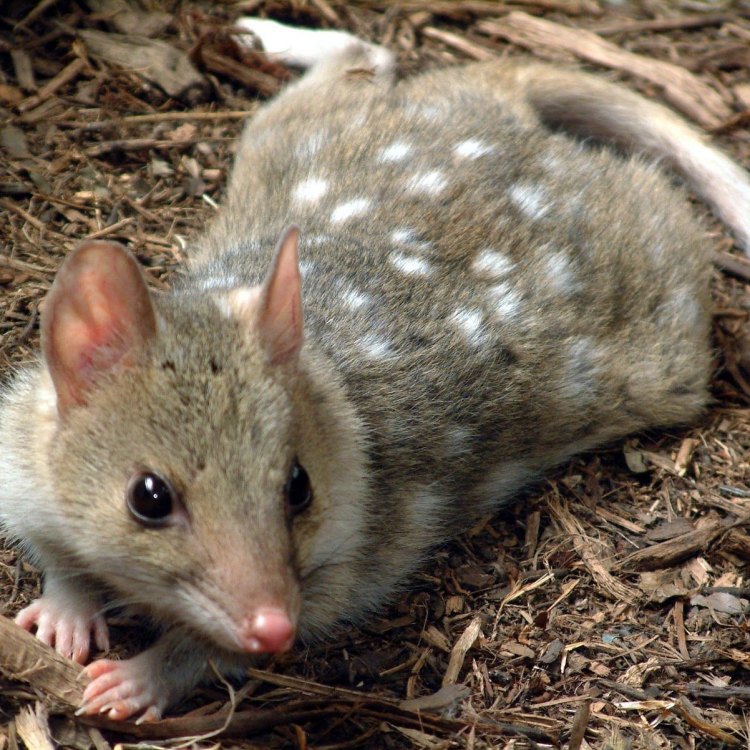
Dasyurus sp.
The Unique and Fascinating World of Quolls
In the animal kingdom, there are countless fascinating and unique creatures that never fail to capture our attention. One such creature is the quoll, a small to medium-sized marsupial with distinctive features and behaviors that make it stand out from the rest. From its promiscuous reproductive behavior to its nocturnal hunting habits, quolls are truly one-of-a-kind animals. In this article, we will delve deeper into the world of quolls, learning about their size, lifespan, behavior, threats, and much more PeaceOfAnimals.Com.The Basics: Adult Size and Average Lifespan
Quolls are small to medium-sized marsupial mammals that can range from 25 to 75 centimeters in length, depending on the species. They have relatively short legs, pointed snouts, and a long, prehensile tail, making them agile climbers. On average, quolls weigh between 300 to 1300 grams, and their size varies depending on their habitat and food availability.When it comes to their lifespan, quolls have relatively short lives, with an average lifespan of 2-5 years. However, some species have been known to live up to 7 years in captivity. Factors such as habitat quality, food availability, and predation can affect their lifespan. The average lifespan may seem short compared to other animals, but quolls make the most out of their time, living life to the fullest in their natural habitat.
Reproduction and Unique Reproductive Behavior
Like most mammals, quolls reproduce sexually, with females giving birth to live young. However, what makes their reproductive behavior unique is their promiscuous nature Quahog Clam. Unlike most mammals that usually have one mate for the breeding season, quolls mate with multiple partners.During the breeding season, which typically occurs between December to May, males and females will travel long distances to find potential mates. Mating can happen multiple times with different partners, and there is no set mating pattern. This promiscuous behavior ensures genetic diversity in the offspring, improving their chances of survival.
Once the mating is complete, the female will give birth to 6-30 tiny, underdeveloped joeys, which make their way to the mother's pouch. The joeys will spend the next 8-10 weeks in the pouch, nursing and growing. After that, they emerge from the pouch but still cling to the mother for another 2-3 months.
Sounds and Social Behavior of Quolls
Quolls are vocal animals and use various sounds to communicate with each other. They produce hisses, barks, and chatters, among other vocalizations. These sounds serve as a way to defend their territory, attract mates, and signal danger. Each quoll has its unique vocalizations, making it easier for them to communicate with one another.When it comes to their social behavior, quolls are solitary animals. However, some species, such as the eastern quoll, may form small groups of up to 6 individuals. Their social structure is not well understood, but it is believed that these small groups consist of a mother and her offspring. Despite living solitary lives, quolls are not completely anti-social, and they may occasionally interact with other individuals.
Nocturnal and Opportunistic Predators
Quolls are nocturnal animals, meaning they are most active at night. During the day, they will rest in their dens, which they may dig themselves or find in natural crevices or burrows. Being nocturnal helps them avoid predators, as they are less likely to be seen in the darkness. It also allows them to hunt at night when their prey is more active.As for their hunting habits, quolls are opportunistic predators, meaning they will eat whatever food is available. However, their diet mainly consists of rodents, insects, birds, and small reptiles. To catch their prey, quolls use their sharp teeth and agile climbing skills to pounce on unsuspecting victims. They are also adept at hunting in trees, making use of their prehensile tails to hold onto branches while they hunt.
Threats and Conservation Status
Unfortunately, quolls face numerous threats in their natural habitat. Habitat loss due to human activities, such as land clearing and deforestation, is a significant threat to their survival. This loss of habitat also leads to increased competition for resources and fragmentation of populations.Another threat to quolls is vehicle collisions, as they often cross roads at night, leading to fatalities. Introduced species, such as foxes and feral cats, pose a threat as they compete for prey and even prey on quolls themselves. Additionally, climate change is affecting their habitat and food availability, making it harder for quolls to survive in their natural environment.
The conservation status of quolls varies depending on the species, with some listed as least concern, while others are endangered. However, all species face some level of threat, making their conservation a top priority. Various conservation efforts, such as habitat preservation and control of introduced species, are necessary to ensure the survival of quolls in the wild.
The Impact on Ecosystem and Human Use
Quolls play an essential role in their ecosystem as important predators that help control the populations of rodents and insects. They also contribute to seed dispersal, ultimately helping with plant growth and diversity. As predators, they also regulate the population of their prey, ensuring a balanced ecosystem.While quolls may not have significant human use, they do serve as an indicator of the health of their ecosystem. If quoll populations decline, it may be an indication of larger issues within their habitat. Additionally, quolls play a role in ecotourism, with their unique features and behaviors attracting wildlife enthusiasts to observe and learn about these fascinating creatures.
Distinctive Features and Interesting Facts
Quolls have several distinctive features that make them stand out from other marsupials. One of the most noticeable features is their coat, which is covered in white spots. This distinctive coat serves as camouflage, helping them blend into their surroundings. They also have sharp teeth, perfect for catching prey, and prehensile tails that aid in climbing and balance.One of the most interesting facts about quolls is that they are marsupial mammals, meaning they carry their young in a pouch. The pouch is located on the female's belly, and it provides warmth and protection for the tiny joeys. The pouch is a unique feature of marsupials and is one of the defining characteristics of this group of animals.
Natural Predators of Quolls
Quolls may be skilled hunters, but they are not without their predators. Larger carnivorous mammals such as dingoes and Tasmanian devils pose a threat to quolls, as they may compete for food and even prey on them. Birds of prey, such as owls and eagles, also pose a threat to quolls, especially for the smaller species.In conclusion, quolls are magnificent creatures with unique features and behaviors that make them stand out in the animal kingdom. Their promiscuous reproductive behavior, nocturnal hunting habits, and vital role in their ecosystem make them truly fascinating animals. As humans, it is our responsibility to protect and conserve these incredible creatures, ensuring their survival for generations to come.
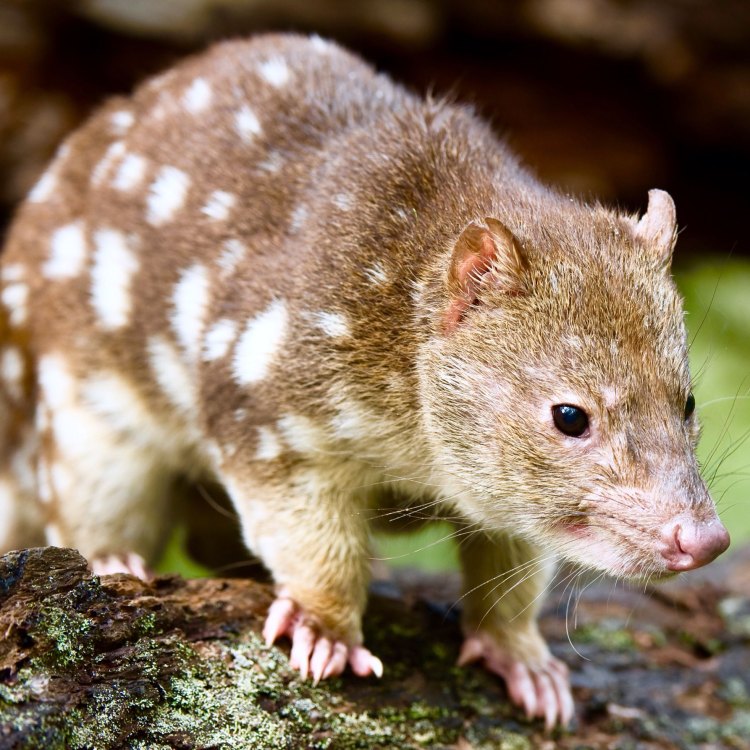
The Unique Quoll: Australia's Small but Fierce Mammal
Disclaimer: The content provided is for informational purposes only. We cannot guarantee the accuracy of the information on this page 100%. All information provided here may change without prior notice.

